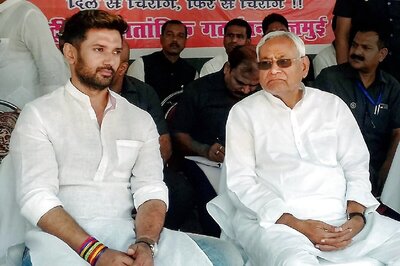
views
The 14th round of military commander-level talks between India and China on January 12 will focus on establishing confidence between the opposing forces ahead of approaching summers in eastern Ladakh, while also seeking to address issues associated with disengagement at pending friction points along the Line of Actual Control (LAC) in the region.
On Monday, security sources said the Indian side is looking forward to a “constructive dialogue” with China to resolve the balance friction areas along the LAC.
Sources in the government told News18.com it is expected that the talks this time will lead to a resolution at the Hot Springs area, where a limited number of troops from both sides continue to face each other.
Interestingly, disengagement at Hot Springs, along with Gogra Post, was agreed upon by the two sides during the 12th round of military talks. However, it did not completely take place.
Resolution of the long standing issues of disengagement at the Depsang plains would carry on in the subsequent meetings.
Additionally, different confidence building measures (CBMs) are likely to be discussed in the meeting prior to the onset of summers, when the snow melts and the passes open, making the movement of troops easier and faster. The CBMs could include laying down certain conditions when troops come in close proximity and a robust mechanism to carry out checks and verification of the patrolling points along the LAC where disengagement has already taken place.
It can also include intimating each other’s training areas and exercise schedules, sources said.
Sources added that it is also being considered whether the patrolling programme towards the claim lines of each side should be exchanged between the two sides in advance to prevent any clashes in the months ahead.
While withdrawal of troops may not be feasible, induction of additional troops into the depth areas is likely to be discussed so as to prevent any further escalation.
India will also be discussing the construction of permanent infrastructure by China close to the disputed LAC.
The next round of military talks between the two sides comes after a gap of three months. The 13th round of talks held on October 10 had failed.
Major General Ashok Kumar (Retd) told News18.com that the military commanders’ talks on Wednesday are particularly critical because of two factors — the approaching summers and China’s new land border law which came into effect on January 1 this year.
“Discussing various confidence building measures to narrow the trust deficit between the two countries ahead of the summers will be particularly critical for India, given that there has been no de-escalation of troops. This is because the summer months do not pose as much a challenge for the Chinese PLA troops as the winter does,” he said.
Moreover, the new border law which marks certain disputed areas as Chinese sovereign territory might also have a bearing in the subsequent negotiations, even though it is unlikely to directly feature in the military-level talks, he added.
The Army veteran said that unless the Chinese come with a pre-determined mindset of not letting the talks progress, the issue of Hot Springs should get resolved post the talks on Wednesday.
“It is, however, important to keep persuading China to get back to pre-April 2020 positions and also address the issue of disengagement in the Depsang Plains in the northern part of eastern Ladakh, as strategically, it is the most critical of all the friction points,” he said.
India and China continue to remain locked in a military standoff at the LAC in eastern Ladakh since May 2020.
As many as 13 rounds of military commanders’ talks between the two sides have already taken place to resolve the border row and cool down tensions. The talks had led to a disengagement at two friction points at the LAC — the critical Finger 4 area of the north bank of Pangong Tso in February last year and, six months later, at Gogra or Patrol Point 17 A.
This meant not only a pullback of the frontline troops of the Indian Army and the Chinese People’s Liberation Army, but also a dismantling of the temporary structure, followed by a mutual verification process.
Both sides had pumped in around 50,000 troops in the Ladakh region since the standoff began, but no de-escalation was carried out by either side despite the disengagement achieved.
In the 23rd meeting of the Working Mechanism for Consultation & Coordination on India-China Border Affairs (WMCC) on November 18, 2021, New Delhi had communicated to Beijing its concerns over the Chinese infrastructure development as well as the build-up of troops in the Ladakh region.
Read all the Latest India News here




















Comments
0 comment